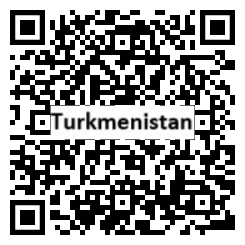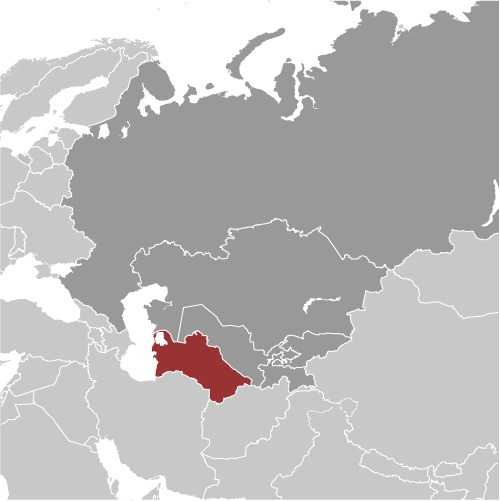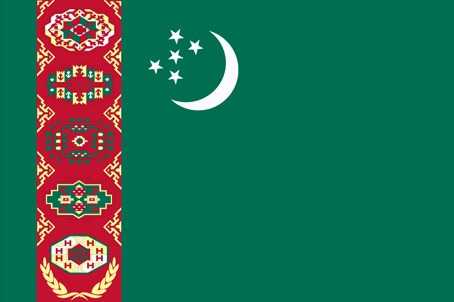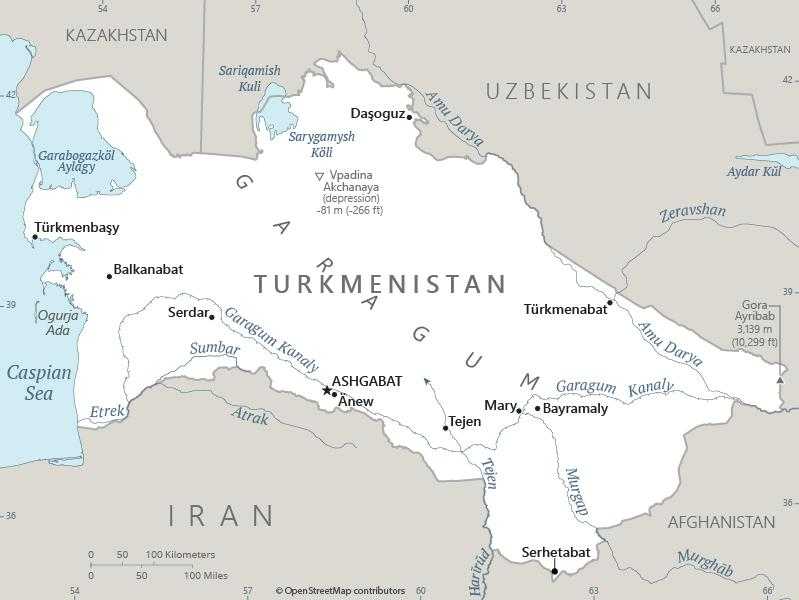Introduction
Background
Present-day Turkmenistan has been at the crossroads of civilizations for centuries. Various Persian empires ruled the area in antiquity, and Alexander the Great, Muslim armies, the Mongols, Turkic warriors, and eventually the Russians conquered it. In 1924, Turkmenistan became a Soviet republic; it achieved independence when the USSR dissolved in 1991.
Geography
Area
total : 488,100 sq km
land: 469,930 sq km
water: 18,170 sq km
Climate
subtropical desert
Natural resources
petroleum, natural gas, sulfur, salt
People and Society
Population
total: 5,744,151
Ethnic groups
Turkmen 85%, Uzbek 5%, Russian 4%, other 6% (2003 est.)
Languages
Turkmen (official) 72%, Russian 12%, Uzbek 9%, other 7%
Religions
Muslim 93%, Christian 6.4%, Buddhist <1%, folk religion <1%, Jewish <1%, other <1%, unspecified <1% (2020 est.)
Population growth rate
0.92% (2024 est.)
Government
Government type
presidential republic; authoritarian
Capital
name: Ashgabat (Ashkhabad)
Executive branch
chief of state: President Serdar BERDIMUHAMEDOV (since 19 March 2022)
head of government: President Serdar BERDIMUHAMEDOV (since 19 March 2022)
Legislative branch
description: unicameral Assembly or Mejlis (125 seats; members directly elected in single-seat constituencies by absolute majority vote in 2 rounds if needed to serve 5-year terms); formerly the Assembly was the lower house of the bicameral National Council or Milli Genes, which consisted of an upper house, the People's Council or Halk Maslahaty, and the Assembly or Mejlis
Economy
Economic overview
upper middle-income Central Asian economy; has 10% of global natural gas reserves, exporting to Russia and China; natural resource rich; authoritarian and dominated by state-owned enterprises; major central-south Asian pipeline development
Real GDP (purchasing power parity)
$94.79 billion (2022 est.)
$93.205 billion (2021 est.)
$89.192 billion (2020 est.)
Real GDP per capita
$14,700 (2022 est.)
$14,700 (2021 est.)
$14,300 (2020 est.)
Agricultural products
milk, cotton, wheat, potatoes, watermelons, tomatoes, grapes, beef, sugar beets, lamb/mutton (2022)
Industries
natural gas, oil, petroleum products, textiles, food processing
Exports
$10.282 billion (2021 est.)
$8.164 billion (2020 est.)
$11.188 billion (2019 est.)
Exports - partners
China 71%, Turkey 7%, Uzbekistan 5%, Azerbaijan 4%, Morocco 2% (2022)
Exports - commodities
natural gas, refined petroleum, fertilizers, crude petroleum, electricity (2022)
Imports
$6.25 billion (2021 est.)
$8.301 billion (2020 est.)
$8.844 billion (2019 est.)
Imports - partners
UAE 27%, Turkey 24%, China 19%, Kazakhstan 7%, Germany 4% (2022)
Imports - commodities
broadcasting equipment, cars, wheat, computers, iron structures (2022)
Exchange rates
Turkmenistani manat (TMM) per US dollar -
Page last updated: Wednesday, July 24, 2024




